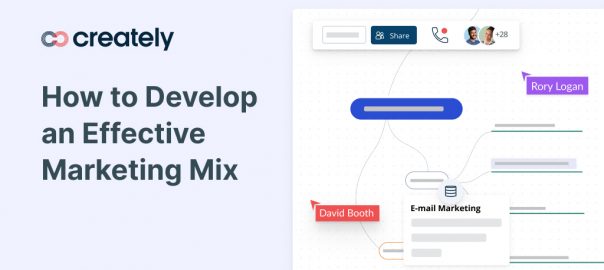If you’ve got a business you need a business plan. It’s so obvious, the statement should be inane. After all, without a business plan, people won’t know where you’re heading or what they can do to get there.
It will be harder to make informed decisions about what fits in with the core of your company concept and what you shouldn’t touch with a 10-foot pole. And there is a much greater likelihood that your company will drift away from what it’s good at and lose its competitive edge.
And that’s a sure route to failure.
At the same time, numerous companies don’t have a business plan – largely because they struggle to write one up. Instead, at best they’ll have a couple of dozen drafts floating around which kind of get at what they’re trying to do, but don’t really manage to capture it, while at worst it’s right at the bottom of somebody’s ‘to do’ list, right next to getting the company registered at the chamber of commerce.
If either of those situations describes you, then I’m here to help. Today, let’s talk about how you can write the perfect business plan.
Do your research
You need to know as much as possible about your product, the product of your competitors, the market and your audience. Don’t skip this part. It is absolutely essential that you know what’s going on. This is the foundation of your business plan. And without a foundation you’re building castles in the air.
A poorly researched business plan can be more harmful than not having a business plan at all, as it doesn’t serve to identify your key strengths and the dangers on the road ahead. And that can blind you to both.
What is your plan for?
Over at Entrepreneur they’ve a good definition of the business plan. It, “describes the nature of the business, the sales and marketing strategy and the financial background, and contains a projected profit and loss statement.”
At the same time, that doesn’t have to be how your plan works. There are many variations around this theme. For example, it can serve as a roadmap to steer your business in the right direction. Alternatively, it can serve as a tool to pull in investors.
Before you sit down to write your plan, write down your goals that you’re trying to achieve with your goals. Possibly put them on a sticky note that accompanies the plans as you write them.
Write up a company profile
In this document you summarize the history of your organization, the products and services that you offer, the market segment that makes up your target audience, what resources you’ve got available and what it is about your business that makes it unique.
The great thing about your company profile is that it’s not just for your business plan, it can also serve to inform people about what you’re up to. You can include it in a newsletter, turn it into a blog post, or even put it on your about page. So there you go, you’re killing two birds with one stone (poor birds).
Document everything
This is particularly important if your goal is to attract investors. After all, investors are in the business of making money and that means that they’re not just going to throw money at you because they like the cut of your jib.
Instead, they’re going to want to know everything. And they’re not going to be at all impressed if you don’t already have it ready for them or if you don’t know the answer to their questions.
So, make sure you know your cash flow, your expenses and your industry projections. Write down all the property, products and patents that you own and everything else that can be considered an asset.
The marketing plan
Sure, some businesses get lucky with fans going mad about their product and letting the whole world know. You can’t (and your investor won’t) assume that’s you. So create a marketing plan. The goal here is to explain how you’re going to do such things as
- Raise brand awareness
- Introduce new products
- Enter new territories and new markets
- Cross-sell several products together
- How you’ll increase market share for a specific product in a specific price range
- Find and hook desirable clients
- Increase revenue
The plan should include objectives for each of your sections. Here you focus on the ‘why’ as well as the ‘what’ of that point. With that I mean, ‘why is this an objective (and why at this point in time)’ and ‘what are you going to do to achieve it?’
Don’t forget to create a cost projection. After all, marketing costs money and you’ve got to have at least a decent estimate of what it’s going to cost you to achieve your goals.
Don’t just do one version
Different audiences will be interested in different things, have different levels of expertise and different expectations. For example, a banker is going to be interested in a completely different set of values and numbers than a potential partner might be.
For that reason, make sure that you adjust your business plan to the audience you are dealing with. The first step in adjusting your business plan is to figure out what are the most important numbers and ideas for this audience and then make those easily available.
You can do this by re-arranging the document to put those numbers near the top, or by supplying a separate sheet that contains summaries of these points and indicates where the reader might find them in the main document.
Don’t forget the passion
Numbers will back up your idea. They won’t, however, define it. For that reason, make sure that you include why you believe in what you’re doing. Show the people why you care and why you are uniquely capable of doing what you’re outlining in the business plan.
After all, the goal isn’t just to sell yourself, it is also to make certain that they understand that you should be the person to do it. You’ve got to sell the package. And that means showing them that you care.
With all of that together, you’ll have the perfect business plan – one that doesn’t just sell the business, but one that also sells you, so that the investors won’t think ‘what a great idea, I’ll go do that myself’ but rather, ‘what a great idea, I’ve got to do it with them’.
About the author:
Rick Riddle is a marketing consultant and an up-and-coming blogger whose articles aim to help people with digital marketing, blogging, entrepreneurship, and career. Feel free to follow Rick on twitter and LinkedIn.





